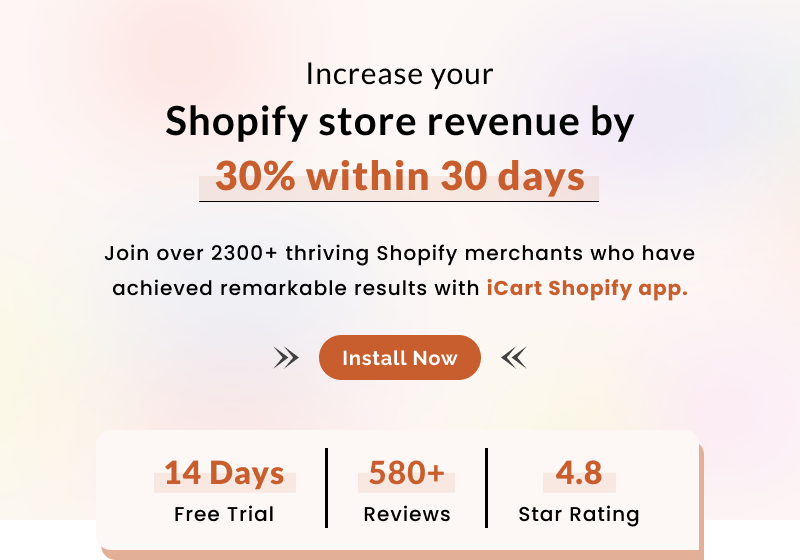
The ideal customer journey would look like this: a customer sees your product, buys your product, loves your product, and buys it again. But the reality is never that simple.
eCommerce customer journey mapping visually represents the many touchpoints in a customer journey—including all of the twists and turns. It separates the buyer journey into distinct stages and illustrates the goals, motivations, and other external factors that directly or indirectly drive a customer to move forward or backward in their journey.
The main goal of eCommerce journey mapping is to meet customer needs and expectations as they move from awareness to loyalty. Customers rightly expect this dedication from the get-go.
Image created by writer. Data sourced from salesforce.com
The four main stages of a Shopify customer journey are:
Awareness: The customer journey begins when a consumer first discovers your product or brand through ads, Google’s SERP, social media, etc. Here, your goal is to attract and engage leads long enough to move them onto the next stage.
Consideration: The consideration stage is where a customer weighs up their options. They might browse your product’s feature page, read online reviews, or look for promo codes. Your goal is to optimize touchpoints based on what you know about your customers’ preferences, pain points, etc.
Decision: When a consumer has decided that they want to make a purchase, ensuring that your customer service, sales, and checkout touchpoints are optimized is the key to driving progression.
Retention: The retention stage focuses on enticing customers to make repeat purchases through engagement. Optimizing the touchpoints within this stage is essential for nurturing one-time customers into loyal customers and advocates.
So, what are the main benefits of eCommerce journey mapping?
The importance of Shopify customer journey mapping
Creating a customer journey map for your online store gives you the clarity needed to create better experiences, drive loyalty, lower the cost of customer acquisition, and more.
Here are the main reasons why eCommerce customer journey mapping is so beneficial to your business.
It helps find gaps within your service
A customer journey map can expose critical gaps and friction within your customer experience. For example, it might uncover navigational gaps between your social media and Shopify store or illuminate silos between your sales and customer service teams. These gaps can lead to frustration, high churn rates, and poor customer experiences.
By identifying these gaps, you can implement powerful, optimizing solutions like ERP software. Cloud ERP software empowers you to unify siloed touchpoints, closing gaps and creating frictionless customer experiences. You can take a customizable approach to integrate siloed data—such as sales, CRM, marketing, and more—into a centralized, accessible location.
Screenshot taken from sage.com
This means that your sales team, for example, can access the same real-time customer data as your customer service team.
Whether it’s adding additional touchpoints or refining current touchpoints, you can effectively close gaps and create smoother customer experiences.
It fosters customer loyalty
Loyal customers have a much higher customer lifetime value than one-time customers. They make more repeat purchases, have higher average order values, and become advocates for your brand.
A customer journey map is essentially a path to customer loyalty. By design, it’s a tool for creating frictionless customer-centric experiences that propel buyers further down the sales funnel.
The better these experiences are, the more effectively you can engage customers, satisfy their needs, and ultimately nurture them to loyalty. This involves taking special care to target customers post-purchase with deals, incentives, and other ways to engage with your brand.
It lowers customer acquisition costs
A critical element of eCommerce customer journey mapping is the identification of your target customer’s pain points, interests, and needs. These insights can be used to create tailored awareness and consideration experiences that hyper-focus on what your customer wants, in turn lowering your acquisition costs.
But that’s not all. Customer journey mapping generates more loyal customers. And loyal customers can become brand advocates who recommend your brand on your behalf. It’s essentially free marketing and it’s a powerful purchasing influencer—a huge 93% of consumers trust recommendations from friends and family more than any other source.
Image sourced from marketingcharts.com
It increases average order value
Once you have a clear understanding of the motivations that drive customer journey progression, you can accurately optimize touchpoints for cross-selling. Suggesting complementary products, sending promotional emails, or making personalized recommendations can all be executed at the right time to drive maximum results.
And as we mentioned above, customer journey mapping increases brand loyalty—and loyal customers spend more with each purchase.
It aligns business goals with customer needs
If there are discrepancies between your business goals and the needs of your customers, you risk focusing initiatives in the wrong areas.
Customer journey mapping mitigates this risk by illuminating the needs of your customers at every stage in their journey. In turn, you can set measurable business goals that target specific customer needs and use data-driven insights to meet these objectives effectively.
Steps to create a customer journey map for Shopify stores
Want to know how to create a customer journey map that drives all of the benefits we’ve listed above? Here’s a step-by-step guide to creating a successful customer journey map.
Define the customer persona
Who are your customers? What are their motivations? What do they value in an eCommerce shopping experience?
Developing customer personas enables you to create a customer-centered journey map, full of optimized touchpoints that align with your target audience’s needs. Delve into their personal attributes, demographics, and buying behaviors to uncover the motivations, pain points, preferences, and interests that drive them down the sales funnel.
Identify touchpoints and interactions
Every interaction that a consumer has with your brand is a touchpoint, whether it’s directly or indirectly. Browsing your social media posts, viewing a Google ad, visiting your website, reading independent product reviews, and contacting your customer service team are just some of the key interactions that consumers have with your brand.
It’s likely that your brand has dozens of touchpoints. Every one of these touchpoints should be optimized to achieve its purpose. Your ads, for example, should entice consumers to click on them. Your website experience should be intuitive and informational. Your customer service should be efficient and personalized. And all of these touchpoints should be as unified and streamlined as possible.
The more touchpoints you have, the more vital eCommerce customer journey mapping becomes for eliminating gaps in your service and targeting the right areas for improvement.
Map out the customer journey
Now it’s time to visualize your customer’s journey from start to finish.
Of course, every customer shops differently. While one customer might go straight from a Google search to your product page to the checkout, most customer journeys aren’t so linear. It’s more likely that your customers will take a cyclical journey, bouncing back and forth between touchpoints across different channels.
This is where the stages of your customer journey come into play. Regardless of the exact route that customers take, you can identify their positioning based on the touchpoints that you’ll find within each stage. And as a result, you can ensure that each stage is optimized to meet its purpose.
Let’s take a look at the touchpoints you’ll find in each stage:
Awareness: At the point where customers are first discovering your brand, relevant touchpoints include ads, Google search results, and social media posts.
Consideration: As buyers browse your products in more depth—often in comparison to your competitors—the touchpoints typically include product catalogs, customer reviews, and comparison websites.
Decision: Once a customer is in the decision stage, the goal should be to make purchasing as easy as possible. Touchpoints include checkout, live chat, sales teams, etc.
Retention: Post-purchase touchpoints are necessary to engage, entice, and reward loyal customers. Touchpoints you’ll find here include promotional emails, social media posts, and customer service teams.
Analyze and identify areas of improvement
Using data collection and analysis, you should be able to identify the parts of your customer journey that need improvement. Remember, just one poorly-designed touchpoint can regress a customer’s journey progression, so it’s important to ensure that every touchpoint is driving the results you expect.
This is where the benefits of ERP software really shine. ERP software grants teams in every corner of your business access to reliable real-time data from a host of different sources. As a result, they can quickly identify issues like high bounce volumes, cart abandonment rates, customer churns, and more.
With so much data at your fingertips, you can ensure that you’re targeting the right areas for improvement.
Implement changes and optimize the customer journey
Once you’ve identified the areas that need improvement, it’s time to make the necessary changes. By studying your Shopify analytics and customer feedback surveys, you can accurately determine problems within your customer journey and take steps to fix them.
Free to use image from Unsplash
It might be that you need to create more impactful ads, write stronger calls-to-action, or introduce ERP software for enhanced collaboration and instant insights into your data. Whatever the case, using your map to identify, analyze, and ultimately optimize your customer journey is a must.
Key takeaways
Consumers have more channels, devices, and online shopping options than they’ve ever had before. Setting up your online store and linking to it from your social media platforms isn’t enough to sustainably attract, engage, and retain customers.
eCommerce customer journey mapping helps you meet customer expectations and needs by prioritizing the customer experience. Once you’ve tapped into the desires of your customer personas and mapped out your brand’s touchpoints, you can optimize every interaction and nurture prospects into loyal, high-value customers.











About the author
Stevie Carpenter